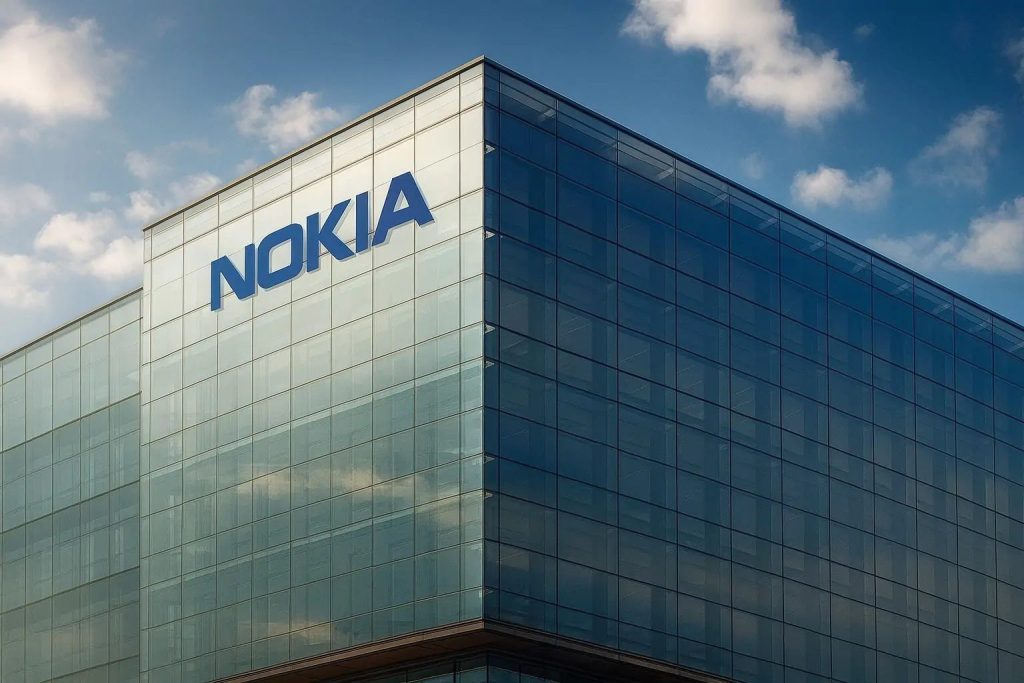As income investors scan the market for reliable double‑digit yields, AGNC Investment Corp. (NASDAQ: AGNC) is back in the spotlight. On Tuesday, November 25, 2025, AGNC stock is trading close to its 52‑week high while still offering a dividend yield of roughly 14% and a monthly payout schedule that’s rare on the NASDAQ. [1]
This article looks at how AGNC stock is trading today, what’s behind its rich yield, what the latest earnings say about dividend coverage, and the key risks investors should weigh in late 2025.
AGNC stock price today (November 25, 2025)
As of early afternoon U.S. trading on November 25, 2025, AGNC shares are:
- Price: about $10.32
- Day’s range: roughly $10.27 – $10.37
- Move on the day: modest gain of around 0.2%
- Volume: ~18–20 million shares, slightly below the roughly 21 million three‑month average volume [2]
Over the past year, AGNC has traded in a 52‑week range of $7.85 to $10.63, putting today’s price only a few percent below the high end of that band. [3]
On a trend basis:
- The 5‑day, 20‑day, 50‑day, 100‑day, and 200‑day moving averages all sit below the current share price, signaling that AGNC’s recent rally has pushed it above its short‑ and long‑term trends. [4]
- Year‑to‑date, AGNC’s price return is up around low‑double digits, and that’s before including dividends, which add another double‑digit percentage to total return. [5]
In other words, 2025 has been a constructive year for AGNC shareholders so far, especially compared with the bumpy ride income investors endured in 2022–2023.
A rare monthly payer: AGNC’s ~14% dividend yield
For many investors, AGNC is first and foremost a dividend story.
Current payout and key dates
AGNC is an internally managed mortgage REIT (“mREIT”) that pays dividends monthly, not quarterly. In its most recent declaration, the company’s board:
- Reaffirmed a monthly common stock dividend of $0.12 per share for November 2025
- Set an ex‑dividend date of November 28, 2025 and an expected payment date of December 9, 2025 [6]
AGNC has now paid $0.12 per share each month throughout 2025, or $0.36 per quarter, matching the pattern in 2024 after its last round of dividend reductions. [7]
At today’s share price near $10.32, the annualized dividend of $1.44 translates into a forward yield of around 13.9–14.3%, depending on the data provider. [8]
That yield puts AGNC squarely on lists of:
- Highest‑yielding monthly dividend stocks [9]
- High‑dividend, high‑risk income names that attract both retail investors and institutional “yield hunters” [10]
Is the dividend covered?
From an income‑investor perspective, the central question is whether that 14% yield is sustainable.
For the third quarter of 2025 (ended September 30), AGNC reported: [11]
- Net income available to common shareholders: about $764 million, vs. $313 million a year ago
- Diluted EPS:$0.72 per share, up from $0.39 in Q3 2024
- Dividends declared:$0.36 per common share for the quarter (three monthly payments of $0.12)
The more important metric for ongoing dividend support is “net spread and dollar‑roll income” per share, which approximates the cash earning power of the portfolio:
- Q3 2025 net spread & dollar‑roll income came in around $0.35 per share, slightly below analyst expectations of $0.39 and just under the $0.36 paid in dividends. [12]
That means that on a pure spread‑income basis, the dividend was only marginally covered in Q3, with the gap bridged by realized and unrealized gains in the portfolio that boosted book value.
Q3 2025: Earnings miss, but book value and economic return shine
The headline from the Q3 report was that AGNC missed on “core” earnings but delivered strong book value growth and economic return. [13]
Key Q3 2025 highlights:
- Comprehensive income: about $0.78 per common share
- Tangible net book value (TBV) per share: rose by roughly $0.47 in the quarter, to the high‑$8 range
- Quarterly economic return on tangible common equity: approximately 10.6%, combining TBV gain plus dividends
- Net interest income: swung to a positive $148 million, compared with a net interest loss a year earlier as funding costs declined and asset yields remained elevated [14]
- Investment portfolio: grew to roughly $90+ billion, heavily concentrated in agency mortgage‑backed securities (MBS) [15]
Analysts and REIT specialists have generally framed the quarter as:
- A modest earnings miss, due to slightly lower spread income
- Offset by strong book value performance, reflecting tighter agency MBS spreads and favorable marks as rates moved lower
Several research notes and independent analyses have highlighted the quarter as an example of how, for AGNC, book value and economic return can matter as much as GAAP EPS, especially in volatile rate environments. [16]
How AGNC makes money – and why Fed cuts matter
AGNC is a mortgage real estate investment trust that doesn’t own physical properties. Instead, it: [17]
- Invests primarily in agency residential mortgage‑backed securities (Agency MBS)
- Uses short‑term repurchase agreements (repo) and other secured financing to leverage that portfolio
- Employs interest‑rate hedges (swaps, swaptions, Treasury futures, etc.) to manage duration and protect book value
- Relies on the spread between the yield on its MBS and its cost of funds (after hedging) to generate distributable income
Agency MBS are backed by Fannie Mae, Freddie Mac, or Ginnie Mae, meaning that credit risk is minimal; investors are effectively taking interest‑rate, prepayment, and spread risk, not default risk. [18]
Rate cuts in 2025: a shifting backdrop
In 2025, the Federal Reserve has shifted from a long pause to a series of rate cuts:
- The Fed cut its benchmark rate in September and October 2025, bringing the federal funds target range down to 3.75–4.00%. [19]
- Long‑term Treasury yields and 30‑year mortgage rates have eased into the mid‑6% range, their lowest levels in about a year. [20]
For AGNC and other agency mREITs, this mix has important implications:
- Lower short‑term rates
- Can reduce funding costs on repo borrowings over time
- Typically help improve net interest margin, assuming assets are not repricing even faster
- Tighter agency MBS spreads
- Rising demand for Agency MBS as a “safer yield” can push prices up, supporting book value
- But if spreads compress too far, future return potential on new purchases declines
- Curve shape & volatility
- A steepening yield curve (short rates down, long rates comparatively higher) tends to be positive for levered carry trades like AGNC’s
- However, sudden rate moves or spread shocks can still trigger book value hits, as seen in prior years
Recent Seeking Alpha commentary on AGNC has reflected this tug‑of‑war: some authors see the rate‑cut cycle as a tailwind for book value and earnings, while others worry that a 14% yield may again prove unsustainable if spreads or book value move the wrong way. [21]
Valuation: premium to book, but still high yield
From a valuation standpoint, AGNC today looks like this:
- Share price: ~$10.32
- Price‑to‑book (P/B): around 1.15–1.17x recent book value estimates [22]
- Trailing P/E: roughly 14–16x
- Forward P/E: around 6.5x, assuming consensus earnings estimates are met [23]
In plain English, AGNC is no longer trading at the steep discount to book value that often characterizes stress periods for mREITs. Instead, the stock:
- Commands a modest premium to book, reflecting improving sentiment and confidence in the Fed’s pivot
- Still offers a double‑digit yield that is much higher than traditional equity REITs or investment‑grade bonds
On the Street:
- According to StockAnalysis, a panel of 10 analysts currently rates AGNC a “Buy” on average, with a 12‑month price target around $10.16, slightly below today’s price—essentially signaling an expectation of “earn the yield, not price upside.” [24]
- MarketBeat’s roundup of research notes points to a “Moderate Buy” consensus, with several large banks and boutiques setting targets in the $10–$11 range. [25]
Third‑party dividend research platforms classify AGNC as a high‑yield, high‑risk income name, highlighting both the appeal of its ~14% forward yield and the history of book value volatility and dividend cuts over the past decade. [26]
Institutional and insider activity: small adds and a CEO sale
Recent filings and reports show a combination of modest institutional buying and insider selling:
- A Form 13F filing disclosed that Dynamic Technology Lab Private Ltd, a quantitative trading firm, initiated a new position of about 41,136 AGNC shares valued near $378,000 in the second quarter, as reported on November 25, 2025. [27]
- Other institutional investors were also cited as increasing stakes, with hedge funds and advisors collectively holding roughly 38% of the float. [28]
- On the insider side, CEO Peter J. Federico sold about 45,800 shares in a late‑October transaction at an average price slightly above $10.25, trimming his position by under 3% but still leaving him with more than 1.55 million shares. [29]
Insider sales can be motivated by diversification or personal liquidity needs and aren’t necessarily a bearish signal on their own, but income investors often keep an eye on management’s trading behavior in such highly levered, rate‑sensitive businesses.
Key risks for AGNC shareholders in late 2025
Despite its strong YTD performance and rich yield, AGNC is not a “set‑and‑forget” income stock. Some of the main risks investors should understand include:
1. Interest‑rate and spread risk
AGNC’s portfolio is highly sensitive to:
- Moves in Treasury yields and mortgage rates
- Changes in agency MBS spreads versus Treasuries and swaps
A sharp backup in yields or a widening of MBS spreads could erase recent book value gains, potentially putting pressure on the share price and, over time, the dividend. [30]
2. Leverage and funding markets
AGNC finances its portfolio primarily via short‑term repo agreements. In periods of funding stress, repo costs can spike or availability can shrink, compressing net interest margins. While 2025 funding markets are currently stable, history shows that mREITs can be vulnerable when liquidity tightens. [31]
3. Dividend sustainability
While AGNC has maintained the $0.12 monthly dividend through 2024–2025, it has also cut its payout multiple times over the past decade when book value and earnings came under pressure. [32]
With Q3 net spread & dollar‑roll income slightly below the dividend, future cuts cannot be ruled out if:
- Funding costs don’t fall as quickly as expected
- MBS spreads widen again
- Book value experiences renewed pressure
4. Valuation risk
Trading at roughly 1.15–1.2x book, AGNC no longer offers the deep value optionality it had when shares were at large discounts to book. If sentiment turns or book value stalls, the market could re‑rate the stock back toward book value or below. [33]
Bottom line: AGNC stock today
On November 25, 2025, AGNC stock sits near its 52‑week high, supported by:
- A still‑rare monthly dividend with a ~14% forward yield
- Improved net interest income and a strong Q3 economic return
- A friendlier backdrop of falling short‑term rates and stabilizing mortgage yields
At the same time, investors are being asked to accept:
- A modest premium to book value
- Ongoing exposure to rate and spread volatility
- The possibility that the current payout could be adjusted in future cycles if earnings lag dividends for too long
For income‑oriented investors who understand mortgage REIT dynamics and can tolerate above‑average volatility, AGNC remains one of the market’s most prominent high‑yield monthly payers. For others, the combination of leverage, rate sensitivity, and payout risk means the headline yield should be weighed carefully against the underlying risks.
This article is for informational and educational purposes only and does not constitute financial, investment, or tax advice. Always do your own research or consult a licensed financial professional before making investment decisions.
References
1. stockanalysis.com, 2. stockanalysis.com, 3. www.investing.com, 4. www.barchart.com, 5. www.barchart.com, 6. investors.agnc.com, 7. investors.agnc.com, 8. stockanalysis.com, 9. www.suredividend.com, 10. www.suredividend.com, 11. www.stocktitan.net, 12. finance.yahoo.com, 13. finance.yahoo.com, 14. www.stocktitan.net, 15. www.investing.com, 16. stockanalysis.com, 17. investors.agnc.com, 18. agnc.com, 19. www.federalreserve.gov, 20. apnews.com, 21. stockanalysis.com, 22. ycharts.com, 23. stockanalysis.com, 24. stockanalysis.com, 25. www.marketbeat.com, 26. www.dividend.com, 27. www.marketbeat.com, 28. www.marketbeat.com, 29. www.marketbeat.com, 30. agnc.com, 31. www.sec.gov, 32. investors.agnc.com, 33. ycharts.com







